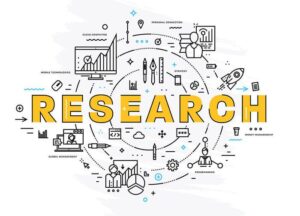
Iron: an underrated factor in aging
Iron is an essential element for virtually all living organisms, but its reactivity also makes it potentially harmful. Iron accumulates with aging, and is associated with many age-related diseases; it also shortens the lifespans of several model organisms. Blocking iron absorption through drugs or natural products extends lifespan. Many life-extending interventions, such as rapamycin, calorie restriction, and old plasma dilution can be explained by the effects they have on iron absorption, excretion, and metabolism. Control of body iron stores so that they remain in a low normal range may be an important, lifespan- and healthspan-extending intervention.
All life forms require the element iron as a constituent of their biochemical systems, iron being used in producing ATP in mitochondria, in cytochromes and hemoglobin, and in many other uses. Iron is essential for organismal growth and maintenance, so all life, from bacteria and algae to mammals, have developed the means to collect and store iron from their environments; this centrality of iron for all life suggests that iron may be involved in aging. Most organisms, including humans, have no systematic means of ridding themselves of excess iron. Whether this lack of ways to dispose of excess iron came about due to a relative scarcity of iron, or because the detrimental results from excess iron were relatively rare in an environment in which few organisms died from natural aging, is a question that remains to be answered. Whatever the answer to that may be, most organisms accumulate iron as they age [1–3].
A problem that organisms face in the use of iron in biological systems is protecting cells from iron damage. The very property of iron that makes it useful, its ability to accept or donate electrons, also gives it the ability to damage molecules and organelles via the Fenton reaction, in which iron reacts with hydrogen peroxide, leading to the formation of the highly reactive and toxic free radical, hydroxyl.
Most iron in cells is bound to proteins and other molecules that safely store it and prevent it from interacting with other macromolecules. In mammals, ferritin and transferrin are such proteins; hemoglobin is, however, the quantitatively most important iron depot in mammals. In theory, these storage proteins should be enough to protect organelles and macromolecules from iron’s reactivity, but in practice another process becomes perhaps more important, and that is iron dysregulation. Storage proteins such as ferritin can themselves be damaged, leading to “leakage” of free iron, which can then react with and damage cellular structures, which in turn can lead to organ damage and the deterioration associated with aging [4]. Damage to ferritin can be caused by glycation due to hyperglycemia, a phenomenon seen more widely with the development of advanced glycation end products (AGEs), and with the glycation of hemoglobin (HbA1c), elevated in diabetics. The superoxide anion can also damage ferritin, leading to a vicious cycle in which leakage of free iron leads to oxidative stress, in turn leading to more iron leakage.
Whether this damage associated with aging is in fact a cause or consequence of aging of course remains to be determined, but as we shall see, there are several other reasons to think that iron is a driver of aging.




